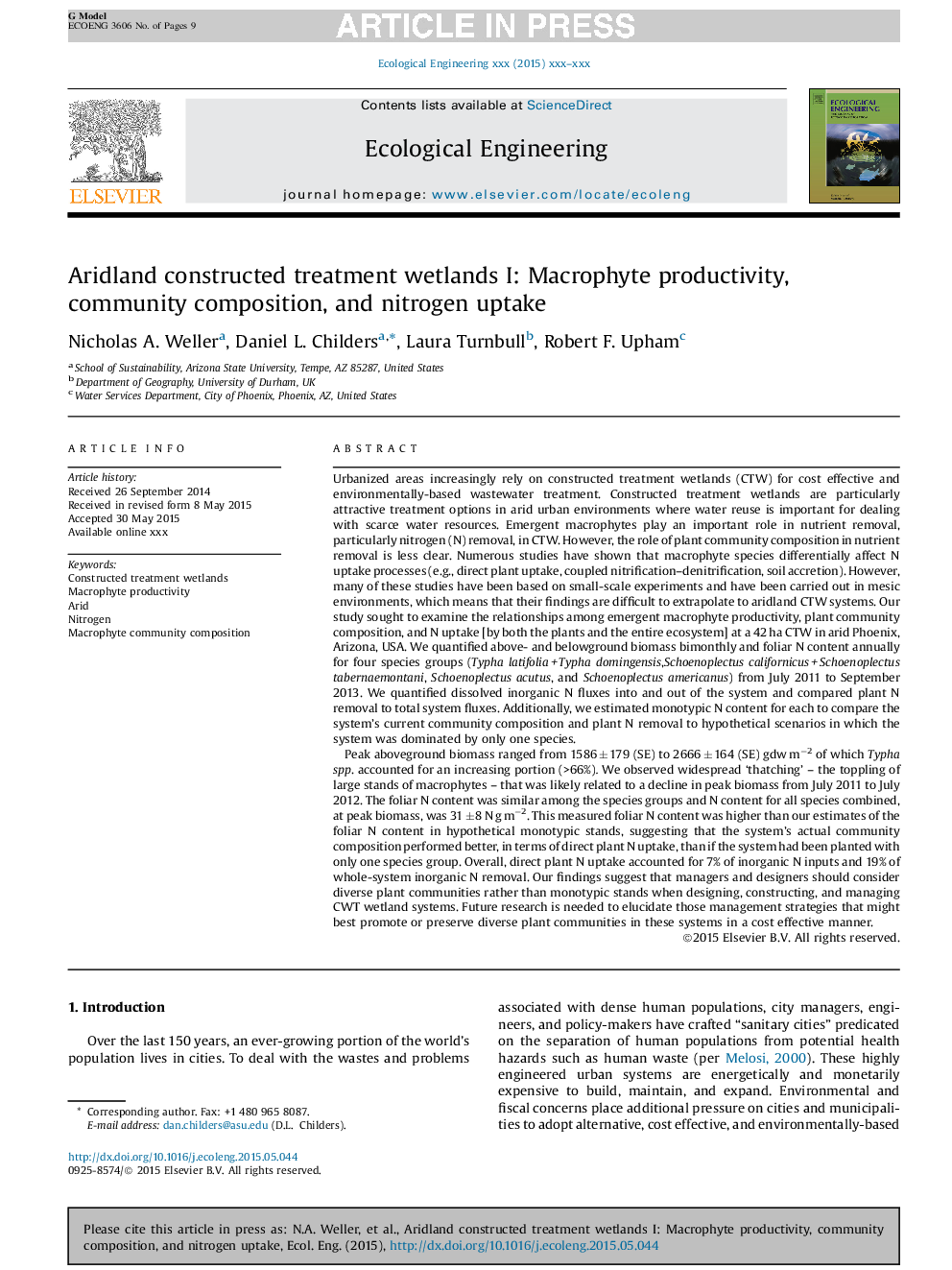| کد مقاله | کد نشریه | سال انتشار | مقاله انگلیسی | نسخه تمام متن |
|---|---|---|---|---|
| 8848253 | 1618002 | 2016 | 9 صفحه PDF | دانلود رایگان |
عنوان انگلیسی مقاله ISI
Aridland constructed treatment wetlands I: Macrophyte productivity, community composition, and nitrogen uptake
دانلود مقاله + سفارش ترجمه
دانلود مقاله ISI انگلیسی
رایگان برای ایرانیان
کلمات کلیدی
موضوعات مرتبط
علوم زیستی و بیوفناوری
علوم کشاورزی و بیولوژیک
بوم شناسی، تکامل، رفتار و سامانه شناسی
پیش نمایش صفحه اول مقاله

چکیده انگلیسی
Peak aboveground biomass ranged from 1586 ± 179 (SE) to 2666 ± 164 (SE) gdw mâ2 of which Typha spp. accounted for an increasing portion (>66%). We observed widespread 'thatching' - the toppling of large stands of macrophytes - that was likely related to a decline in peak biomass from July 2011 to July 2012. The foliar N content was similar among the species groups and N content for all species combined, at peak biomass, was 31 ± 8 N g mâ2. This measured foliar N content was higher than our estimates of the foliar N content in hypothetical monotypic stands, suggesting that the system's actual community composition performed better, in terms of direct plant N uptake, than if the system had been planted with only one species group. Overall, direct plant N uptake accounted for 7% of inorganic N inputs and 19% of whole-system inorganic N removal. Our findings suggest that managers and designers should consider diverse plant communities rather than monotypic stands when designing, constructing, and managing CWT wetland systems. Future research is needed to elucidate those management strategies that might best promote or preserve diverse plant communities in these systems in a cost effective manner.
ناشر
Database: Elsevier - ScienceDirect (ساینس دایرکت)
Journal: Ecological Engineering - Volume 97, December 2016, Pages 649-657
Journal: Ecological Engineering - Volume 97, December 2016, Pages 649-657
نویسندگان
Nicholas A. Weller, Daniel L. Childers, Laura Turnbull, Robert F. Upham,